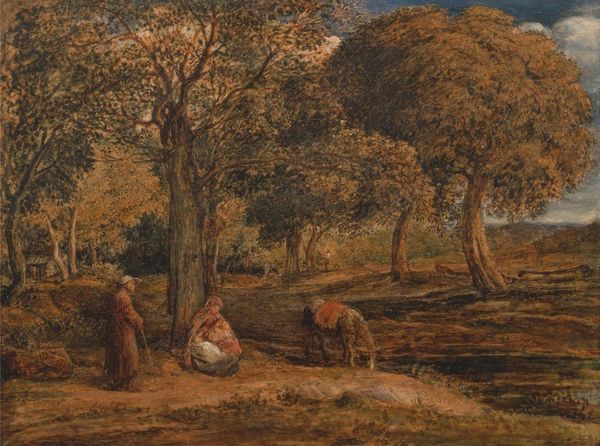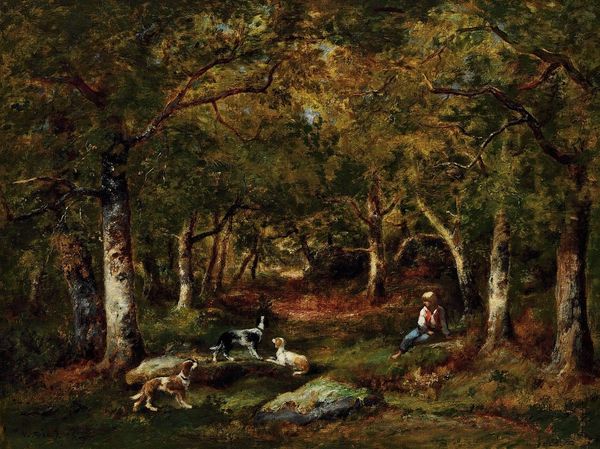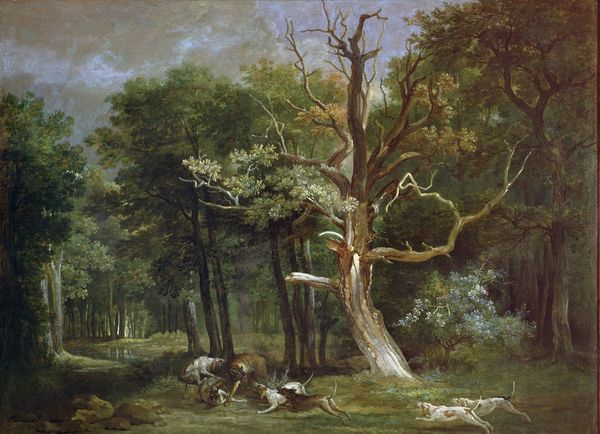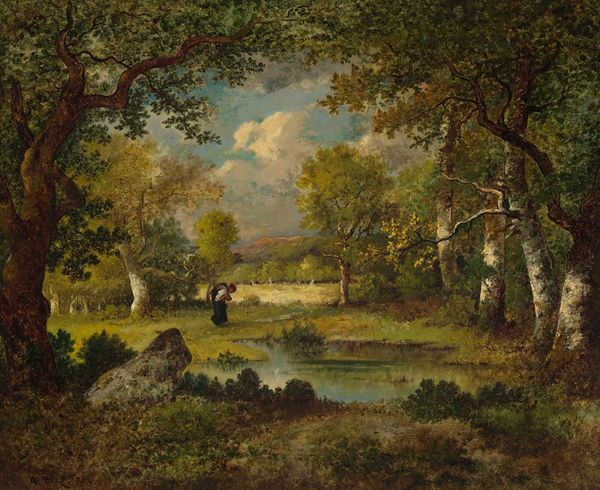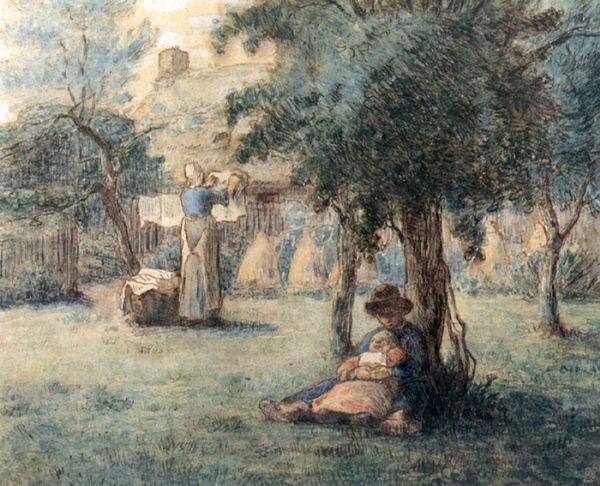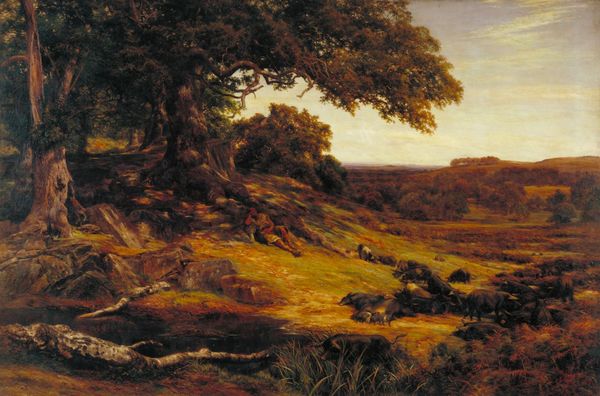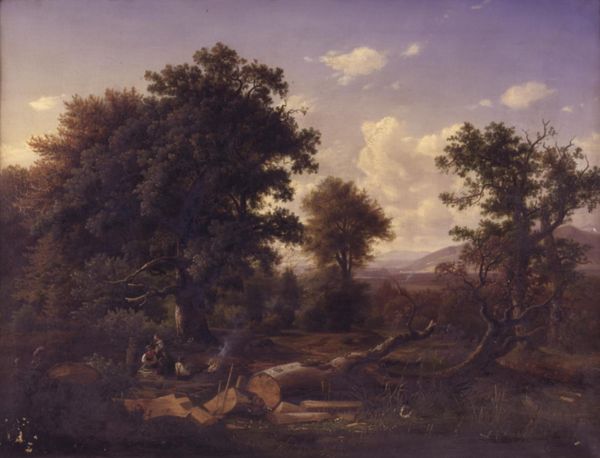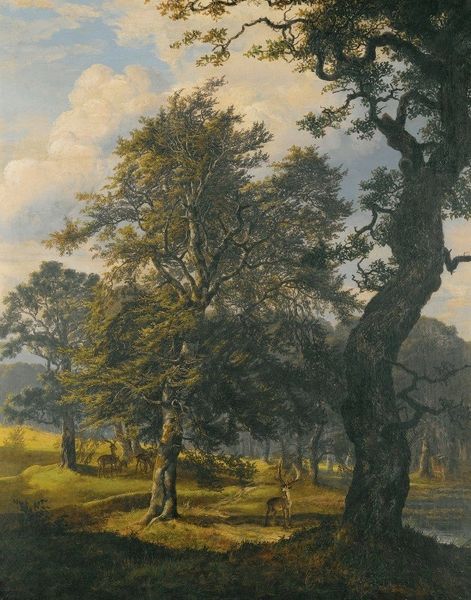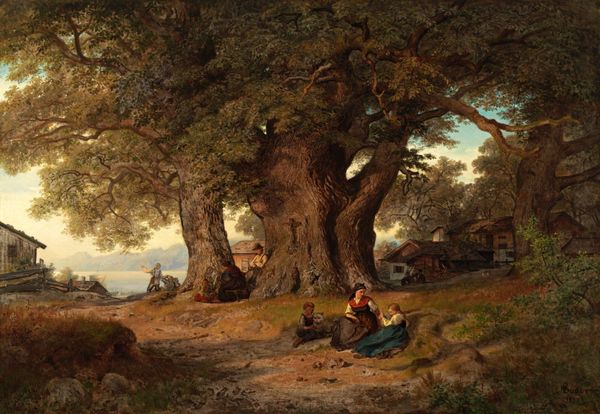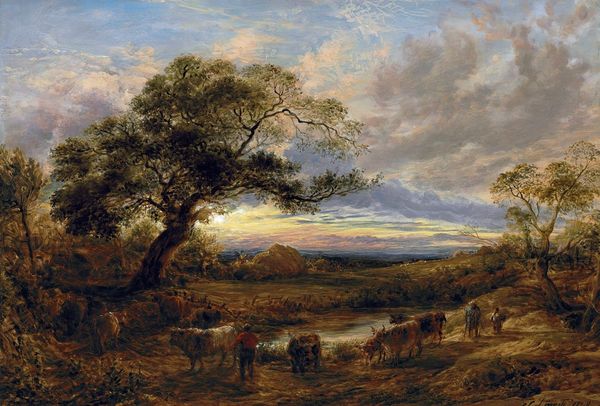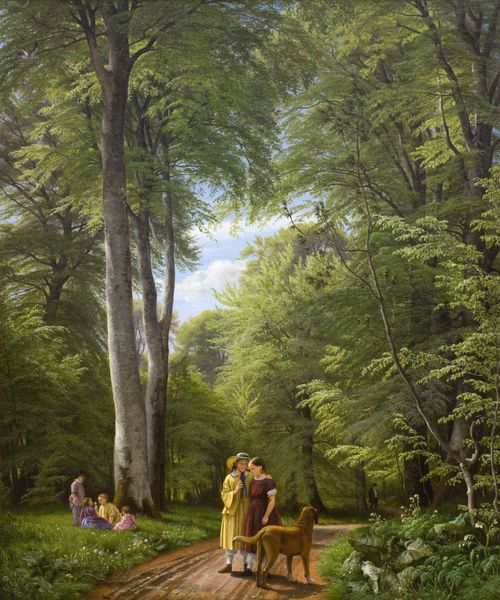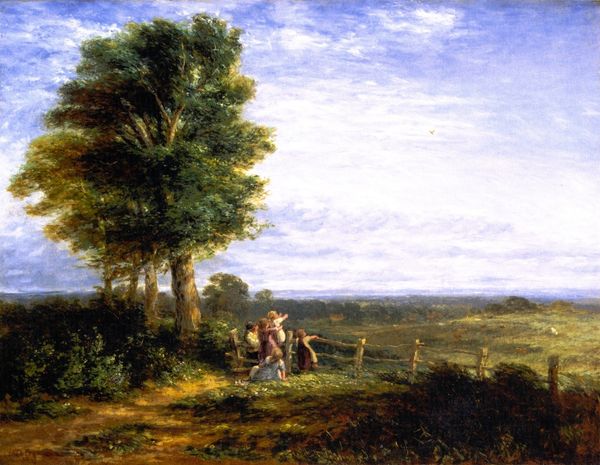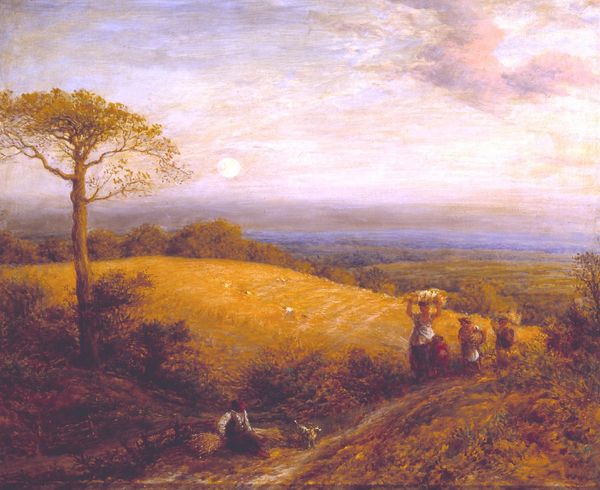
Dimensions: support: 235 x 381 mm
Copyright: CC-BY-NC-ND 4.0 DEED, Photo: Tate
Curator: Here we have John Linnell's "Windsor Forest," a painting held here at the Tate. Editor: It’s striking how the figures seem to blend with the landscape. Are they resting, or is there more to the woodcutting in the title? Curator: Linnell’s work often touches upon the social realities of rural life. It's about the labor of these woodcutters and their place within the larger social fabric of the time. Editor: The thick impasto of the tree trunks shows the physicality of the laborers' actions in the forest. The artist is clearly attuned to the material process of transforming the environment. Curator: Exactly. Linnell was deeply engaged with the Romantic movement and its complex relationship to industrialization and societal shifts. Editor: The light filtering through the trees almost romanticizes their labor. It makes one question if this is a commentary or simply a depiction. Curator: Perhaps a little of both. It's a moment caught between the idealized and the actual. Editor: Yes. Thinking about the materiality here, it underscores the human endeavor of reshaping the natural world. Curator: A worthy point, and a pertinent closing thought on Linnell's exploration of labor and place. Editor: I agree. It makes you ponder about consumption, labor, and the landscape.
Comments
tate 8 months ago
⋮
http://www.tate.org.uk/art/artworks/linnell-windsor-forest-wood-cutting-in-windsor-forest-n00438
Join the conversation
Join millions of artists and users on Artera today and experience the ultimate creative platform.
tate 8 months ago
⋮
In 1815 Linnell spent about a month in the village of Winkfield near Windsor, from where he made sketching trips into the Forest. This painting was based on a smaller one he exhibited in 1816 and which presumably was made on or after such a visit. Woodcutters at work or at rest appear in a number of his works from this period. Linnell was not able to devote much of his time to landscape, however, until the 1840s. Economic necessity forced him to be a portrait painter: 'portraits I painted to live,' he recalled, 'but I lived to paint poetical landscape'. Gallery label, September 2004
